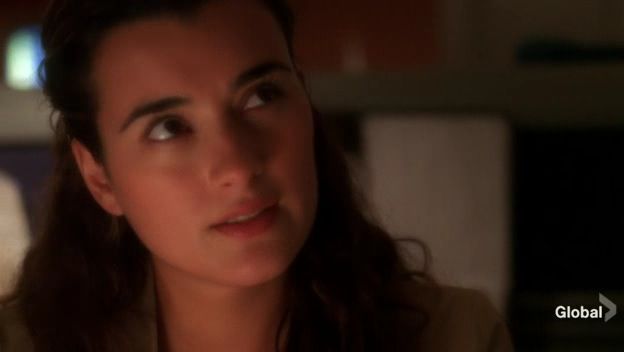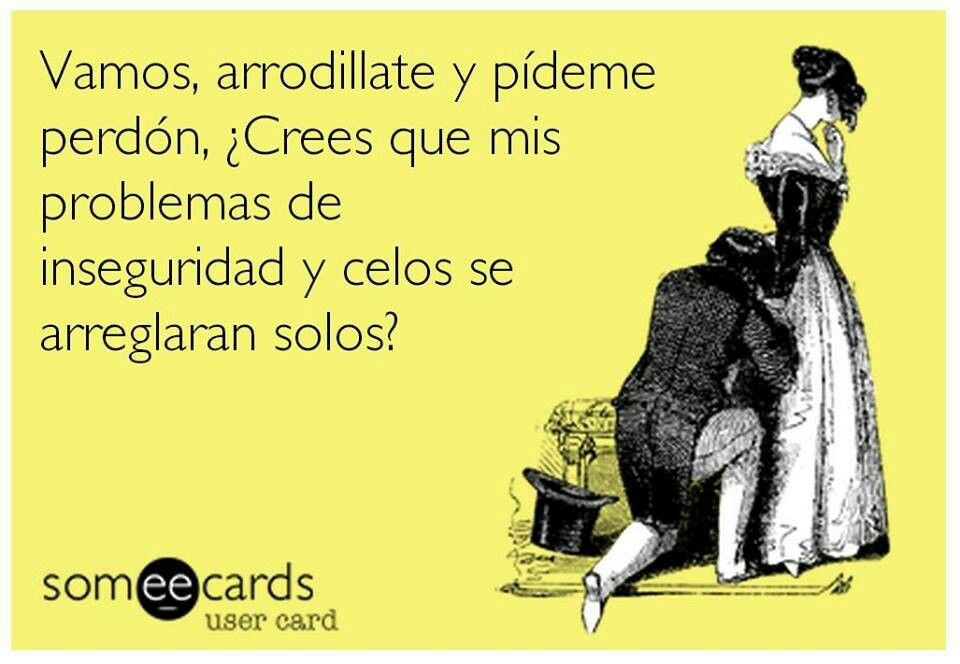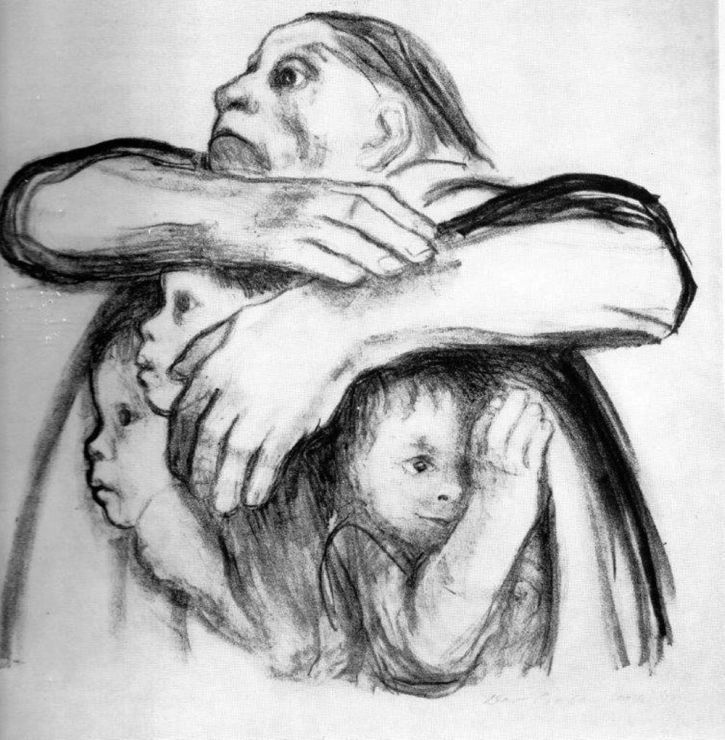Facts about art therapy
5 Quick Facts about Art Therapy
The very words “art therapy” can sound abstract (no pun intended!), and many people have little understanding about its origins, principles and purpose. That can easily create myriad misconceptions. Here, we lay out five facts about art therapy.
1. Art therapy has many uses.
According to Cathy Malchiodi in her book The Art Therapy Sourcebook, art therapy is “a modality for self-understanding, emotional change and personal growth.”
A vast field, art therapy has been used on a variety of populations, with everyone from young kids to the elderly, war veterans to prisoners and people with physical disabilities to those with psychological disorders.
In her own practice, Malchiodi helps clients with everything from processing emotions to gaining personal growth.
In her book, she explains her role:
I believe that my role as an art therapist is to help people explore and express themselves authentically through art.
Through this process, people may find relief from overwhelming emotions, crises or trauma. They may discover insights about themselves, increase their sense of well-being, enrich their daily lives through creative expression, or experience personal transformation. I recognize the power of art to expand self-understanding, to offer insight not available through other means, and to extend people’s ability to communicate. I also view art expressions as personal narratives conveyed through images, as well as through the stories that people attach to those images. Finding personal meaning in one’s images is often part of the art therapy process. For some people, it is one of the most potent therapeutic qualities of art expression. It is a powerful way of knowing yourself and a powerful form of healing.
2. Art as therapy dates back to the 1940s.
Margaret Naumburg, an educator and therapist, was one of the first to define art therapy as a distinct form of psychotherapy in the 1940s.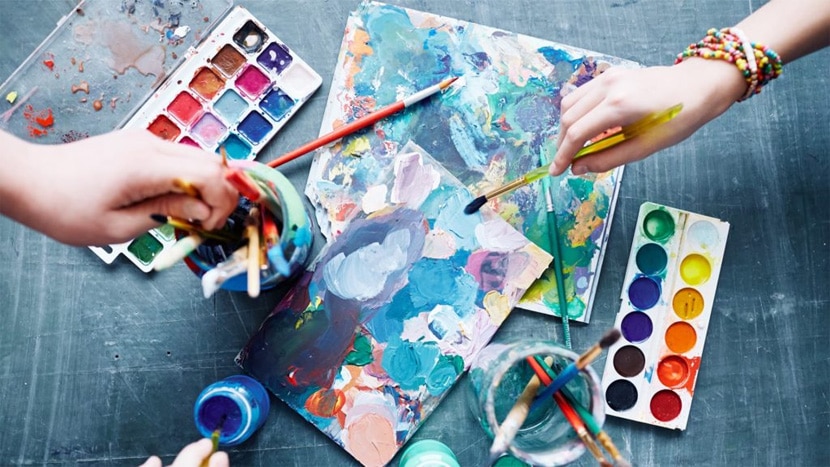 Oftentimes she’s actually referred to as the founder of art therapy.
Oftentimes she’s actually referred to as the founder of art therapy.
According to Malchiodi, Naumburg “viewed art expression as a way to manifest unconscious imagery, an observation resonant with the predominant psychoanalytic viewpoint of the early twentieth century.” She was actually one of the first people to experience psychoanalysis in the U.S., and she believed in the importance of uncovering the unconscious and was very much influenced by Freud. In her practice, she had her clients draw their dreams in addition to talking about them.
3. Art therapy focuses on your “inner experience.”
Art therapy isn’t about focusing on the images around you but those emanating from inside. In other words, according to Malchiodi:
Art therapy asks you to explore your inner experience—your feelings, perceptions and imagination. While art therapy may involve learning skills or art techniques, the emphasis is generally first on developing and expressing images that come from inside the person, rather than those he or she sees in the outside world.
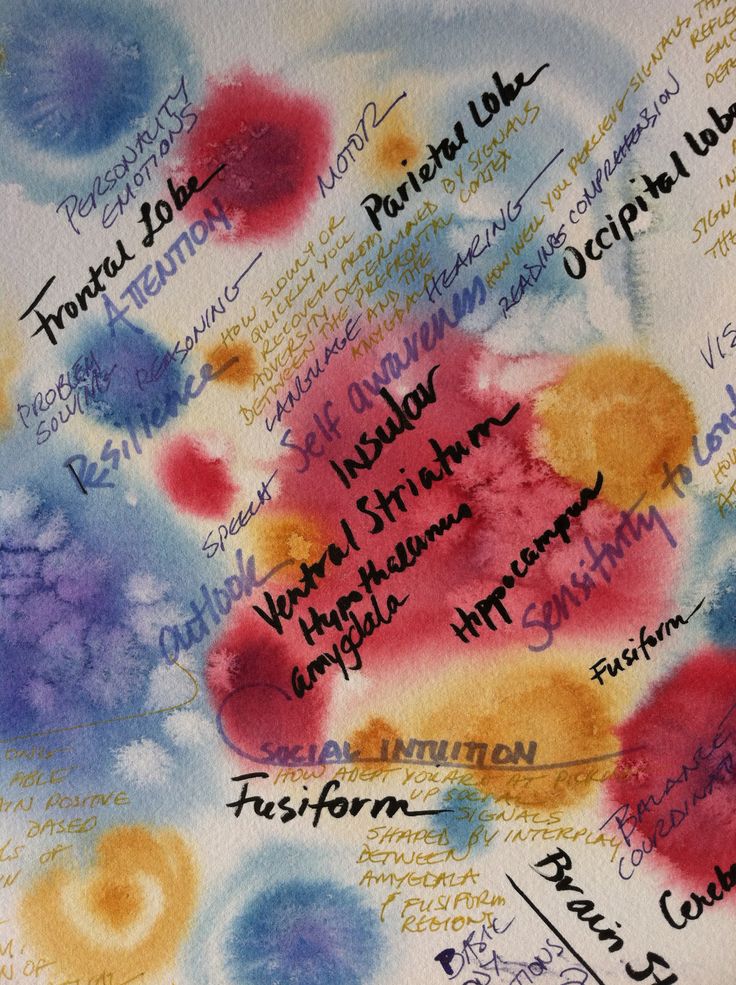
4. Art therapists must have a master’s degree, among other requirements, in the U.S.
The American Art Therapy Association (AATA), a national organization of art therapists founded in 1969, requires that art therapists have an MS in art therapy or a related field. According to the AATA, art therapists are licensed in Kentucky, Mississippi and New Mexico. In New York, they’re licensed as creative arts therapists. Also, licensure laws for counselors include art therapists in Pennsylvania, Massachusetts and Texas.
Interestingly, as Malchiodi writes, most graduate art therapy programs require classes in not only psychology but also studio art and may even require an art portfolio that shows the candidate’s proficiency in drawing, sculpture and painting.
You can learn more about AATA’s educational requirements here.
5. Art therapists use a variety of techniques.
In addition to creating art, most therapists encourage their clients to talk about their images in therapy because this helps in discovering insight and meaning.
Many use a technique called active imagination, which was created by Carl Jung. Basically, clients use their image to freely associate other thoughts or feelings that come spontaneously to their minds. The goal is to help clients gain a deeper understanding and growth.
Some therapists also use gestalt methods. Gestalt focuses on the whole picture in the here and now. A gestalt art therapist may use a client’s image to jumpstart a discussion. Interestingly, clients might be asked to describe their image from the image’s perspective. Malchiodi gave this example: “I am many red circles, and I feel crowded, happy, passionate and playful.” You’re still talking about your own experiences but doing it through the artwork.
Another technique art therapists use is the “third-hand” approach, a term coined by art therapist Edith Kramer. Without distorting the client’s artwork, Kramer believed in the importance of getting involved in the process to help them convey an image to their best ability.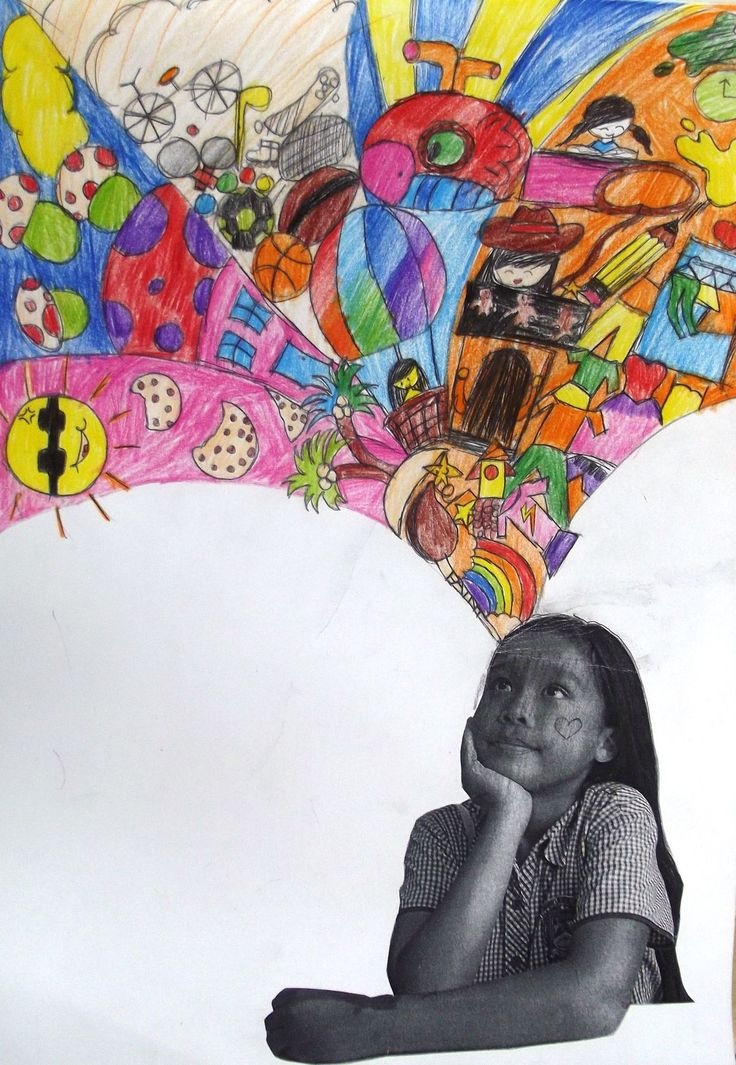 For instance, Malchiodi helped a client with cancer cut and glue pieces for his collages. He picked out the images, and Malchiodi helped with applying them.
For instance, Malchiodi helped a client with cancer cut and glue pieces for his collages. He picked out the images, and Malchiodi helped with applying them.
She also uses this approach to develop the therapeutic relationship with her clients. She had one client, a little girl, who didn’t feel comfortable talking. So Malchiodi started drawing the client’s portrait, and after some time, the client began drawing alongside her.
Art therapists also draw from lots of other genres, including music, movement and writing.
If you’d like to learn more about art therapy, one blog created a list of 50 blogs on art therapy.
Art Therapy - Facts vs Myths — Grove Emotional Health Collaborative
By Deepti Guruprasad, MPhil, ATR-P
Art Therapist at Grove Emotional Health Collaborative
Art Therapy as a profession has been around for a while, but the term has gained popularity in recent years with adult coloring books popping up in every store checkout aisle and an exclusive feature on The Late Show with Stephen Colbert in 2018. But what is Art Therapy, really? Below are some of the most common reactions to that question.
But what is Art Therapy, really? Below are some of the most common reactions to that question.
“Art therapy? What is that? Oh I have those coloring books lying around!”
“Using an art form as a way of coping? But arts and crafts aren’t my thing!”
“Are you going to tell me what I’m feeling looking at my art?”
“Will you recommend drawings for me to make so that I feel better?”
“I can’t draw…no way! And isn’t that just for kids anyway?”
If any of these sound familiar, you’re not alone. Below are some myths and facts about Art Therapy, which will hopefully offer some clarity about the Art Therapy profession and its applications in mental health.
Myth: Art Therapy is simply arts and crafts.
Fact: Art Therapy or Art Psychotherapy (as it is known in the United Kingdom) is an established mental health profession that has been around since the 1940s. It works just like traditional “talk” therapy in that Art Therapists work with clients in a safe, confidential space to help them work through issues and move towards healing and wellness.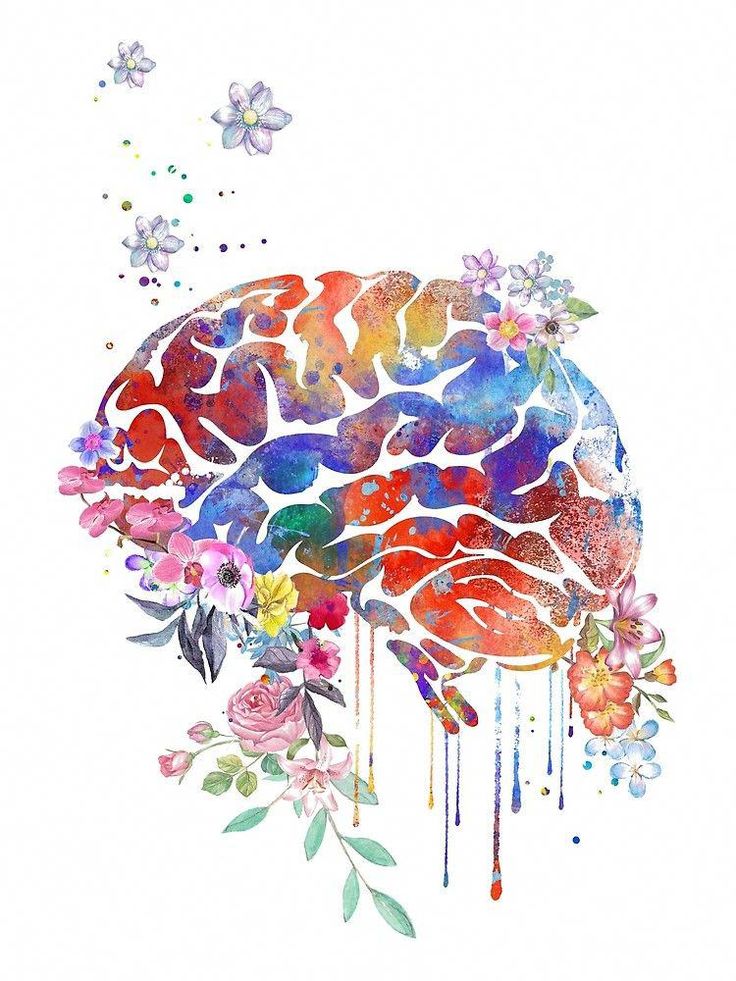 In addition to expressing themselves verbally, clients are provided an array of visual art materials like paints, markers, pastels, clay, yarn and so on to express themselves visually. Art Therapy offers clients the opportunity to engage in kinesthetic, sensory, affective and symbolic experiences that are different from verbal communication alone.
In addition to expressing themselves verbally, clients are provided an array of visual art materials like paints, markers, pastels, clay, yarn and so on to express themselves visually. Art Therapy offers clients the opportunity to engage in kinesthetic, sensory, affective and symbolic experiences that are different from verbal communication alone.
Myth: Art Therapy is like an art class.
Fact: In contrast to an art class where the goal is to learn a skill, an Art Therapy session does not involve learning art as a skill or capturing the formal elements of design and color. Whereas in an art class, the goal may be to represent something as accurately as possible (for instance, a still life painting), the source and content of the artwork in Art Therapy emerges from one’s internal experience. What you represent is authentic to you and hence, there is no right way or wrong way to do so.
Myth: But I still need to know some form of art to engage in Art Therapy.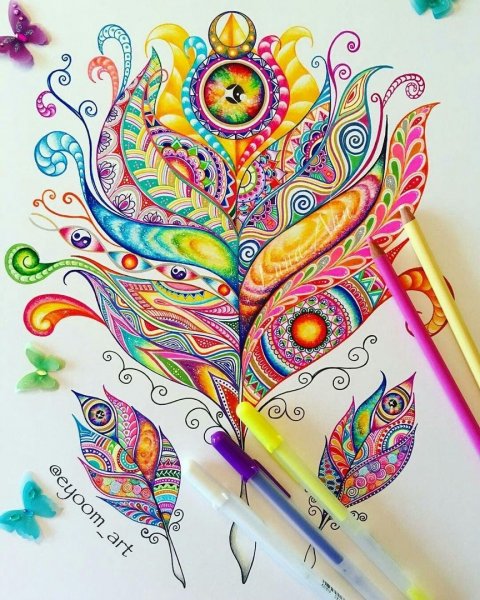
Fact: You do not need to be proficient in art making or have a background in drawing or painting to engage in Art Therapy. In fact, being a novice or having no experience with art can work to your advantage, since experienced artists can sometimes get caught up with critiquing their image. The focus in Art Therapy is on the process of art making and not so much on the quality of product or the result that emerges. In other words, art making is used to further the understanding of the client’s experience and not to create a finished product for display. So, if you are able to choose, for instance, a piece of chalk pastel or color of paint and make a mark on paper - a dot, a scribble, a line, you are ready to participate in Art Therapy! Your Art Therapist is trained to offer just the right materials that are suitable for your goals and will guide you through the process. It is designed to help clients let go of judgement, and simply explore the art media.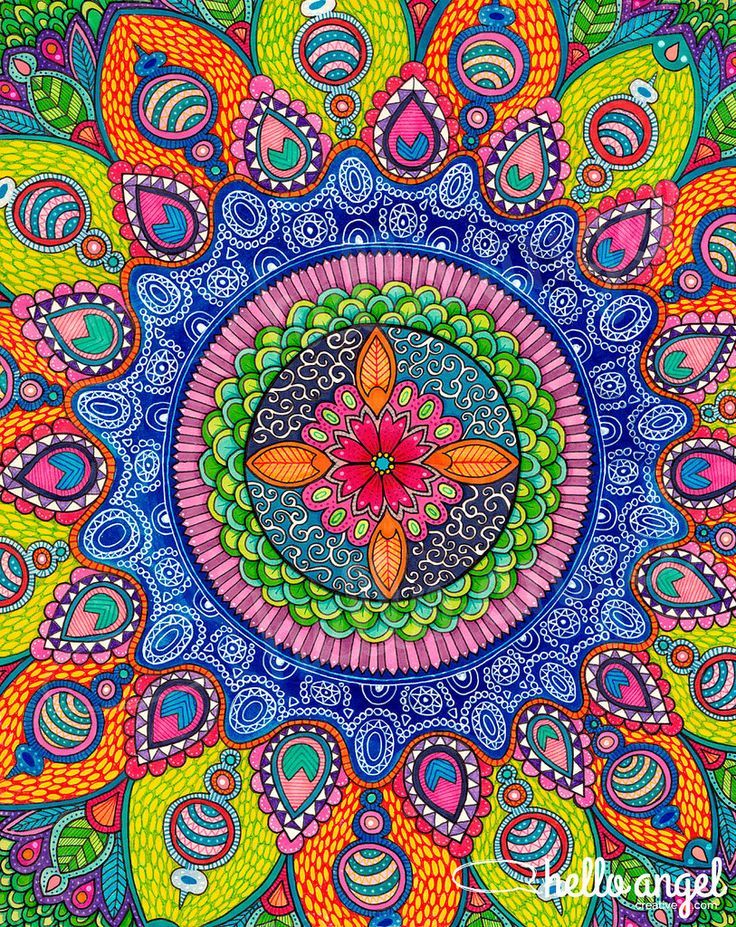
Myth: Art Therapy is just like the coloring books.
Fact: While coloring and engaging in any art form can be therapeutic for some, Art Therapy is more than that. Art ‘Therapy’ signifies the presence of an established relationship between the therapist and client. The Art Therapy session is an actively curated experience by a professional who makes several nuanced choices of the setting, the art materials and the process. The therapist provides a holding the space for the client and their artwork, and facilitates their journey towards healing.
Coloring books vs. Art Therapy = Writing in a journal vs. Talking to a therapist. Coloring and journaling can be therapeutic by themselves. However, the process of working with a trained professional is a whole other experience!
Myth: Art Therapy means making art to feel good.
Fact: Art Therapy has a multitude of applications.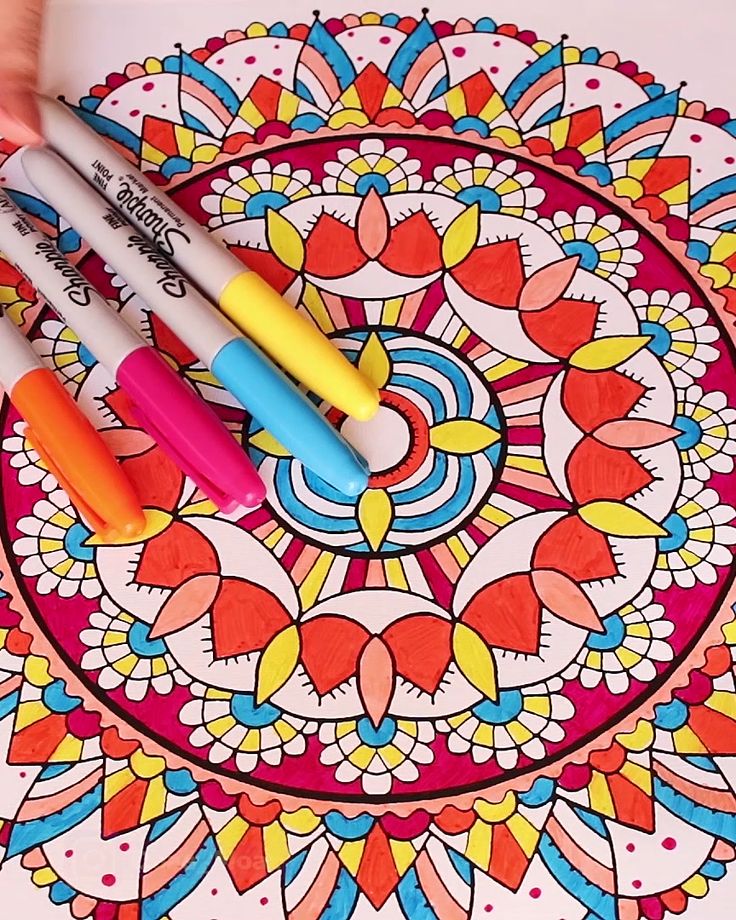 However, at the most basic level it can be divided into two categories based on how art is used in the process of treatment. Most Art Therapists use a combination of the two categories in their work with clients.
However, at the most basic level it can be divided into two categories based on how art is used in the process of treatment. Most Art Therapists use a combination of the two categories in their work with clients.
Art as therapy – where the process of art making is healing in itself. Manipulating wet clay to create a form, splashing some paints on to paper, using your fingers to smudge some pastel colors around or weaving some yarn can be a grounding, mindful, relaxing experience. From a neuroscience perspective, the parts of our brain that are active during art making are different from those we use to engage in verbal processing. Therefore, the noisy mind chatter or the constant inner dialogue gets to quiet down which can be a refreshing and nourishing experience. Some people also experience the ‘flow’ state where one is so immersed in the current experience that time stands still around them.
Art in therapy – where art making becomes a vehicle for symbolic communication, a path to the unconscious mind.
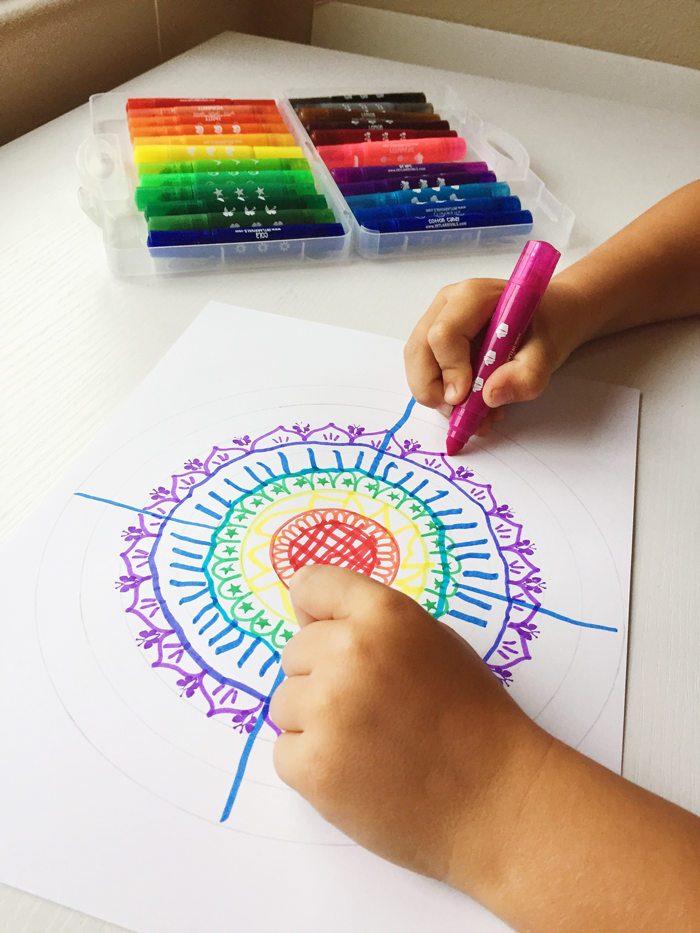 As the saying goes, an image can speak a thousand words. It also offers a visual language to represent experiences in our mind and body that may be difficult to express in words. This can be powerful for both the client and the therapist in their work together.
As the saying goes, an image can speak a thousand words. It also offers a visual language to represent experiences in our mind and body that may be difficult to express in words. This can be powerful for both the client and the therapist in their work together.
Myth: Art Therapy is only for children.
Fact: While children are inherently spontaneous with imagery, Art Therapy can be suitable across age groups. Anyone from young kids to the elderly can participate and benefit from Art Therapy. In fact, Art Therapy can be very powerful with adults since it can often be a less threatening way of conveying experiences that are difficult to express in words. Art Therapy sessions are offered as individual (one-on-one) sessions or through groups and workshops.
Myth: Art Therapists analyze art.
Fact: While Art Therapists facilitates art expression, they rarely analyze artwork since it is representation of a client’s experience or inner reality.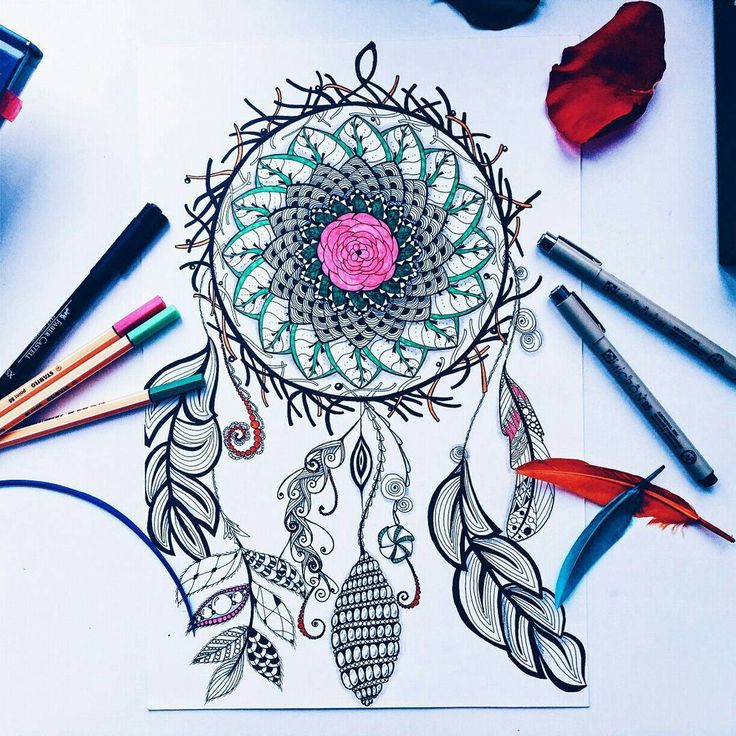 Except in cases of formal assessments that may have a protocol for analysis, verbal processing and reflection of the artwork is a collaborative process, led by the client.
Except in cases of formal assessments that may have a protocol for analysis, verbal processing and reflection of the artwork is a collaborative process, led by the client.
Myth: I will have to do art in every session.
Fact: Not every session requires art making. Some sessions can focus on meaning making and processing or just talking about a client’s concerns. Art Therapists are trained in psychotherapy skills and can facilitate the session based on a client’s goals and where they’re at in the treatment process.
Myth: Art therapy cannot help with every mental health issue.
Fact: Art Therapy can benefit those dealing with a range of psychological issues, trauma, grief, recovery from illness, stress or those looking to improve wellness and self-growth. It has a wide scope and has applications in multiple settings including hospitals and rehabilitation centers, private practice, schools and community organizations.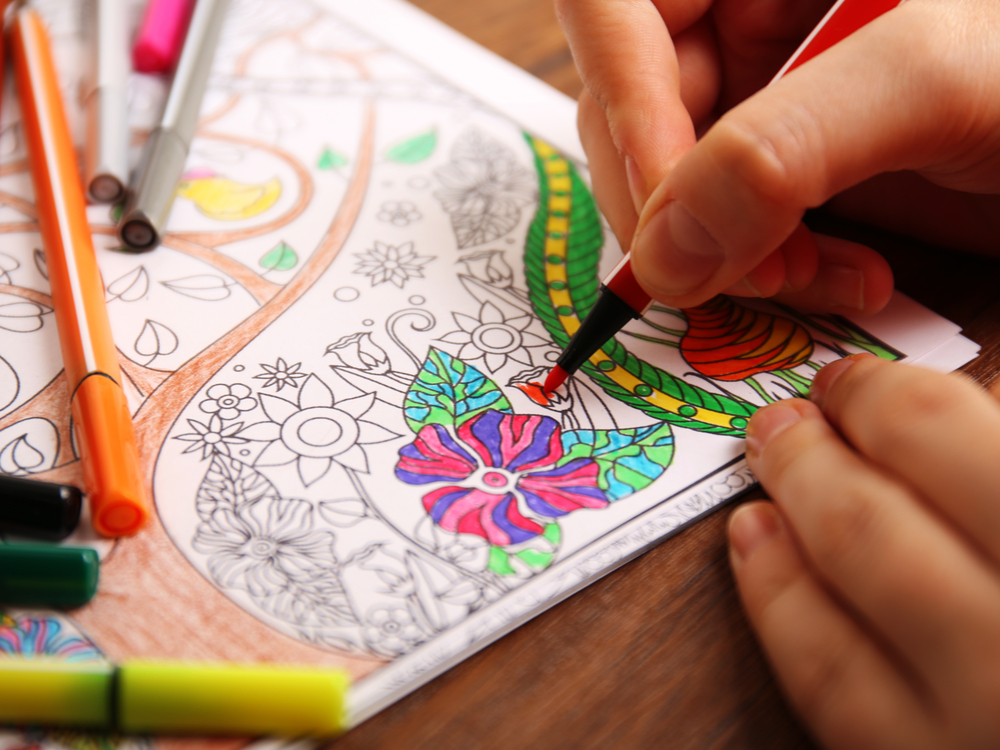
Myth: Any therapist who uses art in a session is an Art Therapist.
Fact: Art therapy is not a modality but a mental health profession. In the US, Art Therapists need to have a master’s degree in addition to other requirements like supervised training experience to be qualified. Art Therapists have the knowledge of developmental processes, mental health issues, assessments, treatment planning and the process of change in therapy. They also have experience in studio art to facilitate art making during sessions. Art Therapists are trained to tailor Art Therapy to suit a client’s unique goals, and make decisions regarding the choice of art media based on the setting in which therapy takes place, the duration of each session and the overall treatment plan.
Art Therapy as a mental health profession has many intrinsic advantages since it offers the opportunity to externalize stress, engage in catharsis, develop coping skills, promote relaxation, develop insight and experience positive emotions, while engaging in creative exploration. Click here to learn more about Art Therapy. If you think you may benefit from Art Therapy or would like to learn more about individual sessions or Art Therapy workshops and groups offered at Grove, contact Deepti Guruprasad.
Click here to learn more about Art Therapy. If you think you may benefit from Art Therapy or would like to learn more about individual sessions or Art Therapy workshops and groups offered at Grove, contact Deepti Guruprasad.
Deepti Guruprasad, MPhil, ATR-P, is a warm and compassionate therapist who enjoys working with children, adolescents and adults of all ages, genders, races and ethnicities. She offers a non-judgmental, safe space to promote healing and growth for individuals experiencing anxiety, depression, stress, life transitions and trauma. Deepti is currently accepting new clients. Request your appointment today.
FIVE FACTS ABOUT ART THERAPY
Skip to contentWhat is art therapy?
Five facts about its history and use will help answer this question.
1. Art therapy has many uses.
This is a direction that allows you to work with both young and old people, people with physical disabilities and psychological disorders.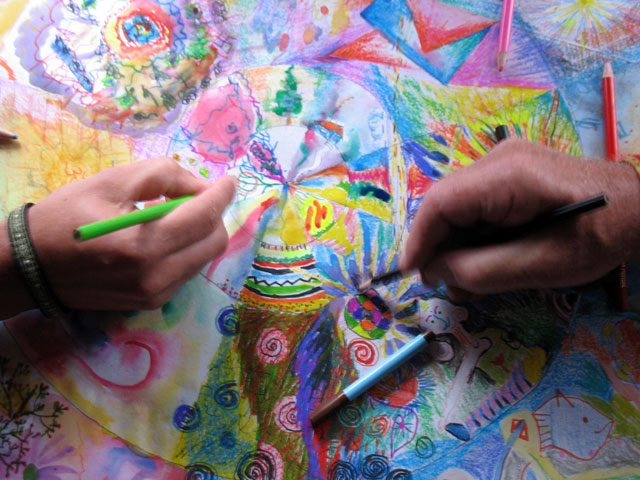
According to Katy Malchiodi, art therapy is "a way of self-discovery, emotional regulation and personal growth."
In her book, Malchilodi explains her role as art therapy as follows:
“I believe my role as an art therapist is to help people explore and express themselves authentically through art. Through this process, people can find relief from overwhelming emotions, crises, or traumas. They can understand themselves, enrich their daily lives through creative self-expression, or experiences of personal transformation. I recognize the power of art to expand self-awareness, gain self-understanding, and empower people to communicate… Finding personal meaning in your images is part of the art therapy process. For some people, this is one of the most powerful therapeutic qualities of artistic expression. It is a powerful way of knowing yourself and a powerful form of healing.”
2. Art as therapy dates back to 1940.
Margaret Naumburg, educator and psychotherapist, was one of the first to define art therapy as a specific form of psychotherapy in the 1940s.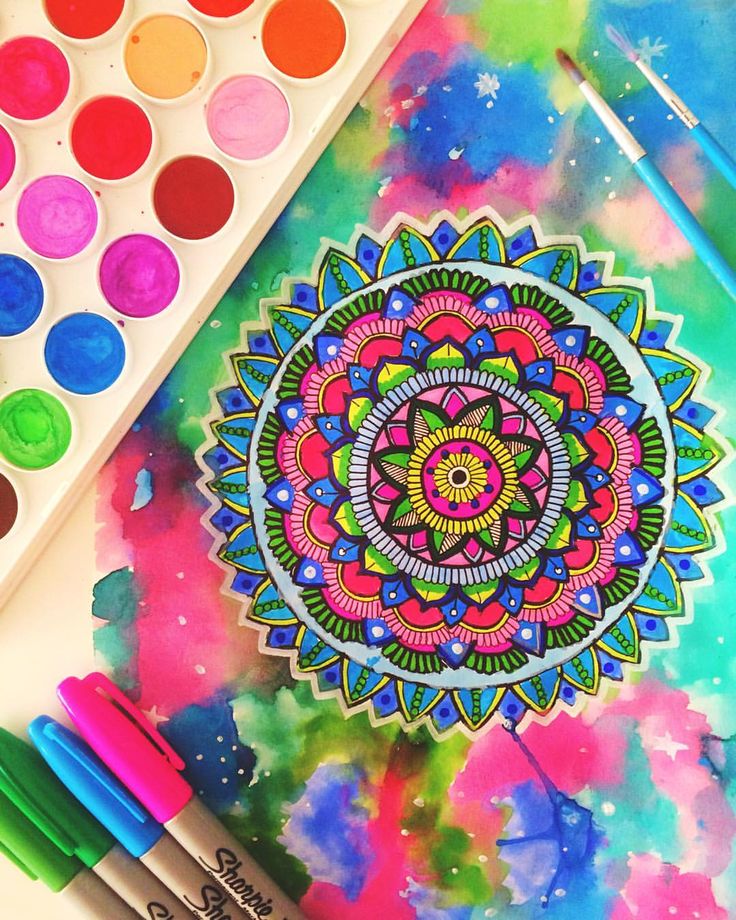 She is often referred to as the founder of art therapy.
She is often referred to as the founder of art therapy.
Naumburg considers artistic expression "as a way to manifest unconscious images that were observed predominantly from a psychoanalytic point of view at the beginning of the twentieth century."
Naumberg was one of the first to use psychoanalysis in the US, and she believes it is important to uncover the unconscious. In her practice, she used images of clients' dreams in addition to talking about them.
3. Art therapy focuses on the "inner experience"
Art therapy does not focus on images around you, but looks for images coming from within. In other words, as Malchiodi writes: “Art therapy asks you to explore your inner experience, your feelings, perceptions and imagination. While art therapy may also include training in visual arts and artistic techniques, the emphasis is usually primarily on the expression of images that come from within the person, rather than those that he or she sees in the outside world.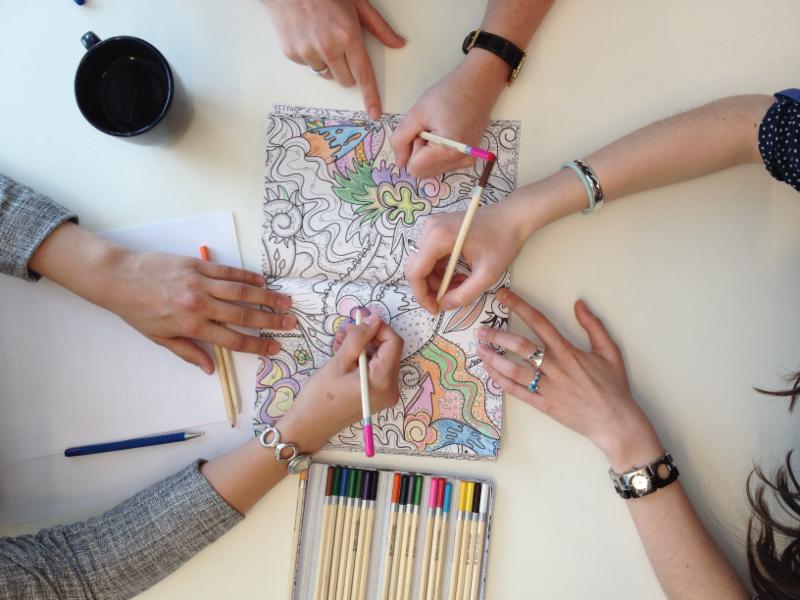 ".
".
4. Art therapists must be qualified professionals
The American Art Therapy Association, founded in 1969, requires art therapists to have at least a master's degree in art therapy or psychology. It is also necessary to comply with the general ethical standards of the work of a psychologist:
- The psychologist-diagnostician bears full responsibility for possible moral damage, including damage to somatic and neuropsychic health, which can be caused to the subject if the psychodiagnostic examination is not carried out correctly.
- Professional psychodiagnostic methods can be distributed only among certified specialists.
- Sovereign rights principle: a person should not be fraudulently tested, he should know who will have access to the results of the survey, and what decisions can be made.
- The principle of objectivity - the examination should be impartial, within the framework of friendly neutral communication with the subject, without showing sympathy or antipathy, without providing help and prompts.

- Principle of confidentiality - all information obtained during the survey must be kept confidential and may be available only to those for whom it is intended.
- The principle of psychoprophylactic presentation of the results - the results of the diagnosis should be presented in an encouraging context that does not traumatize the psyche and self-esteem of the subject.
- 5. Art therapists use different methods.
In addition to creating art objects, the therapist encourages the client to talk about their images, which helps in discovering and understanding their meaning.
Many people use the active imagination technique that was suggested by Carl Jung. Clients use their drawing to freely associate thoughts or feelings that come to mind spontaneously. The goal of therapy is to help the client gain a deeper understanding of himself for personal growth.
Some therapists also use Gestalt therapy methods.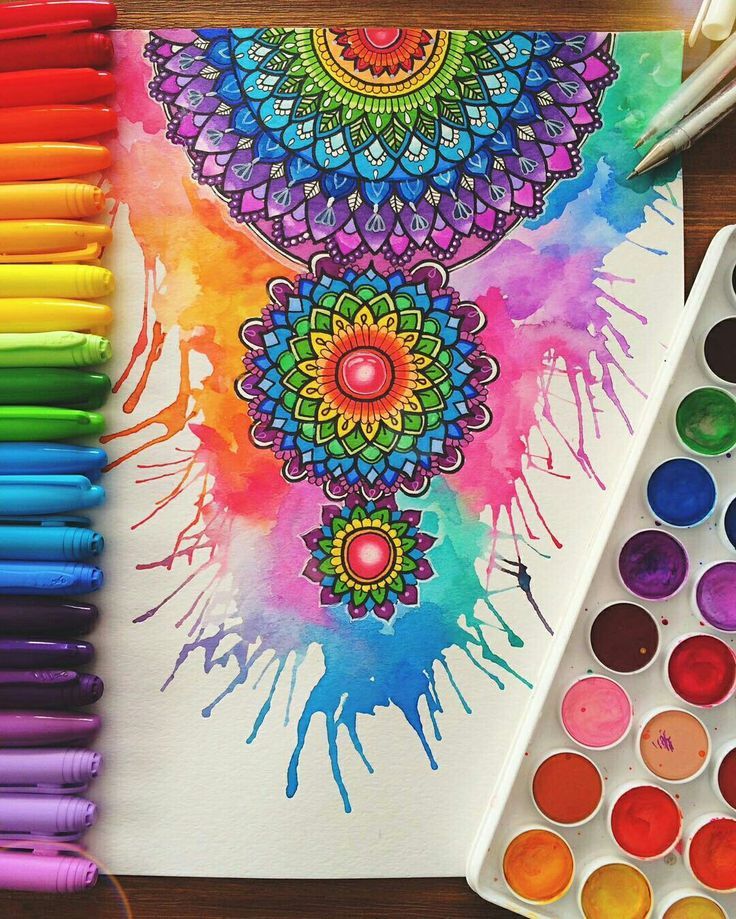 Gestalt focuses on the big picture of the here and now. The Gestalt therapist can use the client's drawing to start a discussion. Interestingly, the client may be asked to describe their image in terms of the image. Malchilodi gives this example: "I am a lot of red circles, and I feel that they are overflowing with happiness, they are passionate and playful."
Gestalt focuses on the big picture of the here and now. The Gestalt therapist can use the client's drawing to start a discussion. Interestingly, the client may be asked to describe their image in terms of the image. Malchilodi gives this example: "I am a lot of red circles, and I feel that they are overflowing with happiness, they are passionate and playful."
Another method that art therapists use is "third hand" - a term coined by art therapist Edit Kramer (Edit Kramer) - a technique that allows you to stimulate the client to creative activity. So, for example, the therapist begins to draw a portrait of the client, and after a while, the client begins to draw next to him.
Art therapists may also address many other genres of art, including music, dance, or prose.
Author: Ananyeva K.I., psychologist, teacher of psychology, Ph.D., diagnostic psychologist, art therapist, host of programs for specialists
Page load linkGo to Top
The power of art.
 What is art therapy | Psychology of life | Health
What is art therapy | Psychology of life | Health
Natalya Timashova
Estimated reading time: 4 minutes
1870
AiF Health No. 49. Russians donate over $1 billion to charity 04/12/2014Shutterstock.com
"Ariadne's Thread"
Art therapy is one of the types of social rehabilitation, when the correction of mental disorders is carried out with the help of painting, theater, cinema, music, singing. The successes of art therapy have recently been demonstrated in Moscow, where from November 10 to November 14, the III festival of creativity of people with mental disabilities "Ariadne's Thread" was held. As part of the international project, dozens of performances, concerts, exhibitions, vernissages, literary readings and film screenings were held at the best venues in the capital.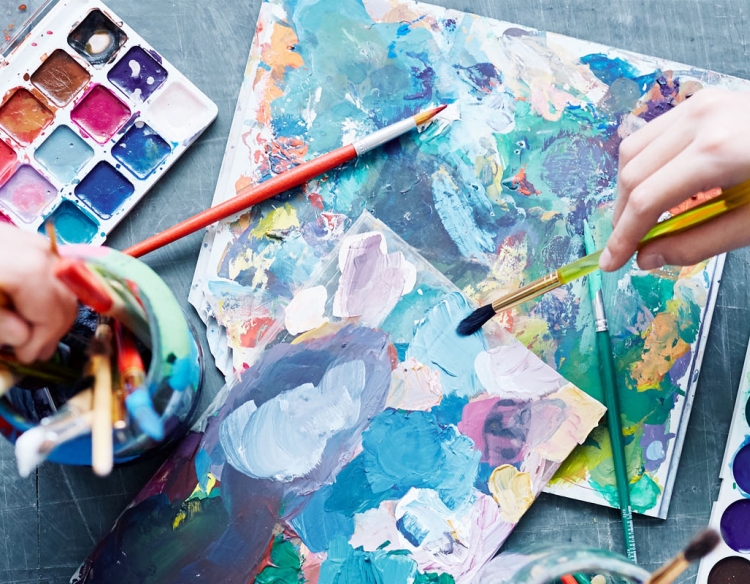 “Such events have a positive effect on public opinion, erasing prejudice against people with mental disabilities. They are even more important for the participants, increasing their self-esteem and trust in others,” says head of the medical rehabilitation department of the psychiatric hospital No. N. A. Alekseeva, Deputy Chairman of the Organizing Committee of the festival "Thread of Ariadne" Arkady Shmilovich .
“Such events have a positive effect on public opinion, erasing prejudice against people with mental disabilities. They are even more important for the participants, increasing their self-esteem and trust in others,” says head of the medical rehabilitation department of the psychiatric hospital No. N. A. Alekseeva, Deputy Chairman of the Organizing Committee of the festival "Thread of Ariadne" Arkady Shmilovich .
“Art is exactly the means that allows you to realize yourself and show the best in yourself. We see how our participants are changing in a positive direction, this is evolution, - says the Spanish choreographer, a teacher in social groups, including for people with mental disabilities, who conducted a master class at the Ariadne's Thread festival, Antonio Quiles Villanueva .
Drawing the inner world
Isotherapy is the impact on a person through painting and sculpture. Such treatment is especially effective for patients who do not have a good command of oral speech.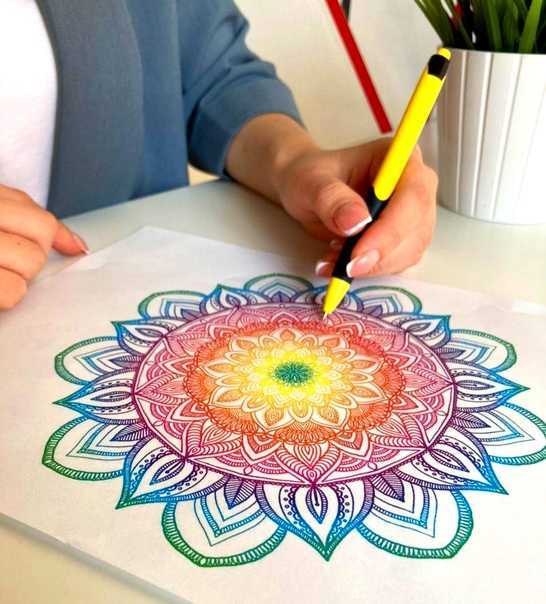 Drawing helps them freely express their thoughts and feelings, show their vision of the world around them, and restore emotional balance.
Drawing helps them freely express their thoughts and feelings, show their vision of the world around them, and restore emotional balance.
Isotherapy is one of the ways to work with autistic children. 5-year-old Iris Grace from the UK has become world famous for her amazing paintings. Her personal exhibition was held in London, collectors became interested in her work. And it all started with the fact that the doctor advised the parents of the baby, who "cannot speak and has big problems with socialization", to take her to drawing. “We took our daughter to draw to help her learn to focus her attention, to accept the outside world,” says the mother of the girl Arabella Carter-Johnson . – Her autism has created a special style of painting that is not typical for children of her age. Iris found a way to show the stunningly beautiful world in her soul."
When a book is useful
Bibliotherapy - treatment by reading books. In this case, the attending physician selects books for the patient, taking into account his psychological state and based on the tasks set for his rehabilitation.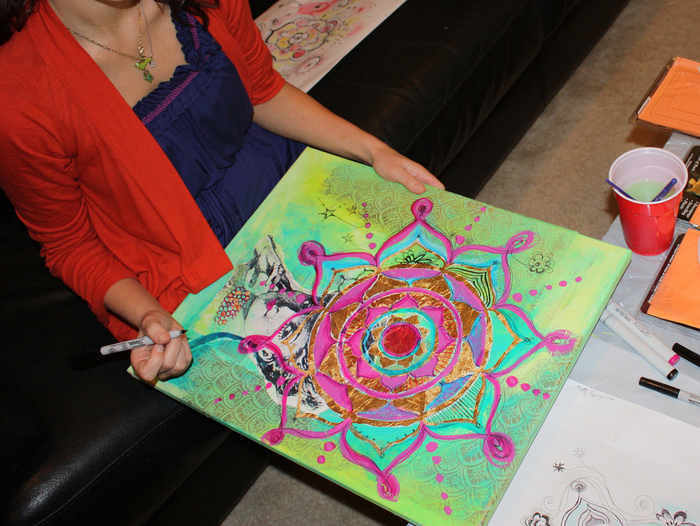 Literature can be different: works of art, fairy tales, scientific journalism. Reading helps a person to distract himself from bad thoughts, broadens his horizons and gives self-confidence. It is important that a person does not just read, but necessarily discusses what they read with someone - this contributes to a better understanding of the nature of the world around them, explains people's actions, and teaches them to distinguish between good and bad.
Literature can be different: works of art, fairy tales, scientific journalism. Reading helps a person to distract himself from bad thoughts, broadens his horizons and gives self-confidence. It is important that a person does not just read, but necessarily discusses what they read with someone - this contributes to a better understanding of the nature of the world around them, explains people's actions, and teaches them to distinguish between good and bad.
Our whole life is a theater
Imagoterapiya – treatment with theater through images. This type of therapy teaches patients to adequately respond to difficult everyday situations, develops the ability to reincarnate, control their feelings. One of the main images used in imagotherapy is the image of the storyteller: the patient retells some work from day to day for a certain period of time, trying to show the evolution of his "I" from what he is to what he would like become. Difficult acting work develops the technique of speech, coordination of movements.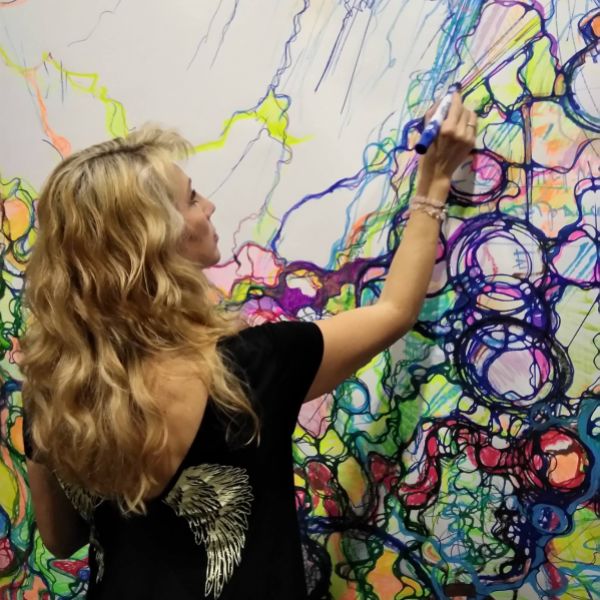
“Our studio is a creative laboratory, we are constantly searching and trying to ensure that every actor develops in our theater,” says Natalia Popova, , the director of the Mirt theater studio, which presented her performance at the Ariadne's Thread festival, Natalia Popova . – People with mental disabilities suffer more than us from the imperfection of our world, from its divisions and barriers. Every day, overcoming the abyss that separates them from society, they do deep inner work. And we can learn a lot from them.”
See also:
- Healing word: linguotherapy can cure infertility and depression →
- Dr. Paracelsus: a drunken hunchback and an ingenious pioneering physician →
- The best foundation of marriage is not love, but duty? →
art therapypsychology
Next article
You may also be interested in
- Art heals: what is art therapy?
- Soda with syrup and dancing to "Na-Na": how to spend a weekend in retro style
- Everybody is dancing.








